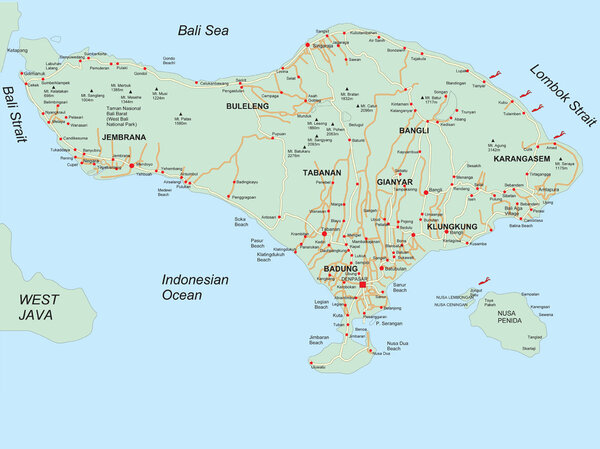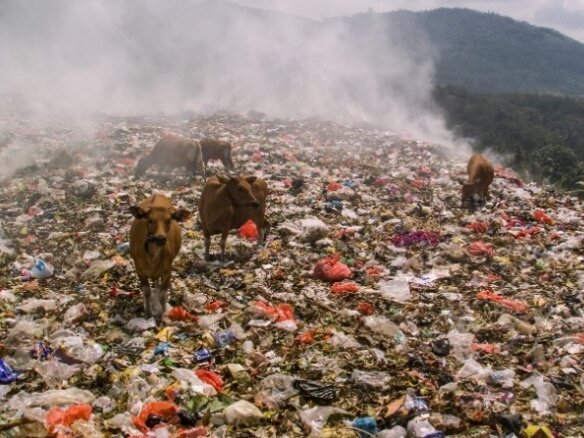Land of contrasts
Things to know about Bali
Indonesia is the largest archipelago in the world with over 17'000 islands. Only about 1,000 of these islands are inhabited. Indonesia lies on the border of three adjacent tectonic plates. As a result, Indonesia is repeatedly hit by earthquakes and minor volcanic eruptions. The climate in Indonesia is tropical and hot and humid. The average temperature at sea level is between 26 and 30°C. At night it often cools down only slightly. It often cools down only slightly at night. The seasons are divided into months with more and months with less rainfall. Between November and March, the monsoon season brings heavy rainfall.


Bali is THE tourist island of Indonesia. With just over 5'500 km2 it is relatively small (about eight times smaller than Switzerland). The island of Bali can be divided into four different areas. The different points of the compass stand for specific Balinese problems. In the north and east of Bali, the landscape is extremely dry. Even in the monsoon months, it rains relatively little in the north. Therefore, the north and east of Bali often have to struggle with drought and water shortage. In eastern Bali, the volcano Gunung Agung dominates the landscape. Most of the people live from agriculture. NEXUBA is mainly active in this region. The largest tourist infrastructures are located in the south of Bali. Places like Kuta, Canggu, Denpasar and Sanur are popular holiday destinations, not only among European tourists. Here, behind the deceptive façade of luxury tourism, problems arise in the areas of waste, exploitation of resources, etc. Due to the sprawling tourism in Bali, the water problem is getting bigger and bigger. In the luxurious resorts, the water, which is already scarce on the whole island, is virtually wasted, while in the north and east of the island, many Balinese still have to carry the water several kilometres to the villages or to their accommodation, because they do not have a supply line.
Another problem is waste. Whole piles of rubbish are inconsiderately set on fire, and the pollution level increases even more in Indonesia, which is already very rich in pollutants. Indonesia is one of the biggest plastic polluters of the oceans. Plastic is rarely recycled, it ends up in large quantities in the smaller and larger rivers, on the beaches and thus in the sea.
Another problem in Bali is the poor, or rather unfair, health care. There are some hospitals with high standards, but these are largely for rich locals, tourists and expatriates. The health stations and health centres, which are mainly visited by the Balinese, are of a low standard.
Especially in the poor east of the country, in NEXUBA's area of operation, health care for the locals is decidedly inadequate.
There is a national health insurance which has 3 classes. Since a significant part of the Balinese can only afford the 3rd class - or none at all - exactly those people are under-supplied who are in great need of help. In the 3rd class, one is only entitled to certain treatments and medicines; everything that is a bit more specific has to be paid for by oneself (especially suitable medicines). "We cannot afford to go to the doctor" is the standard answer to the question why someone does not seek medical help.
Your donations are the spark that makes our projects shine. Join us to support NEXUBA.
Thanks to your donation, good things become possible! Thank you very much!
Bank: Credit Suisse AG
IBAN: CH36 0483 5177 3371 7100 0
Gönnerverein NEXUBA, 4000 Basel
